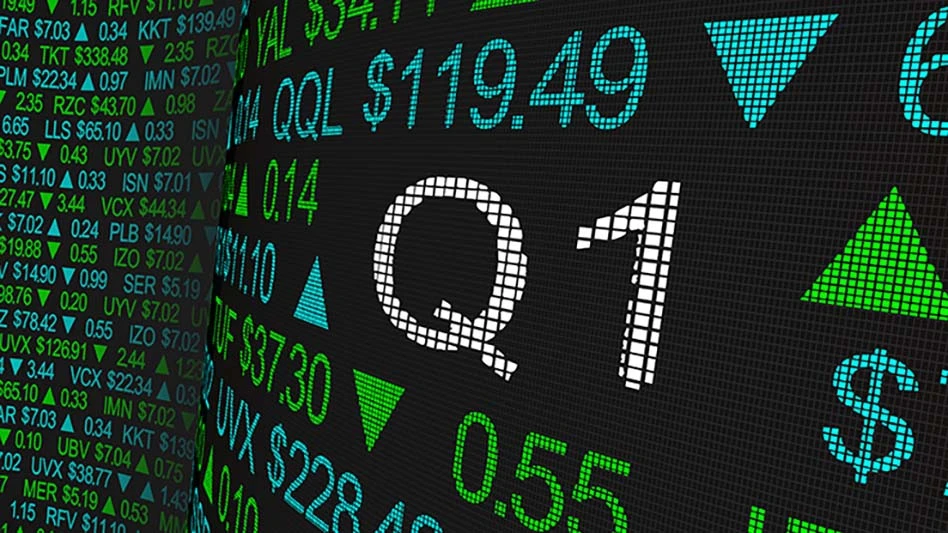
iQoncept | stock.adobe.com
In its first quarterly earnings report of the year, Delaware, Ohio-based packaging producer Greif says multiple headwinds, including destocking, lower customer demand and continued inflationary pressures led to “challenging” results.
Net sales were $1.27 billion in the period, down $293.3 million compared with $1.56 billion in net sales in the first quarter of 2022, and Greif says the figures were primarily driven by volume declines and the impact of $89.4 million of prior-year net sales from its Flexible Packaging joint venture, which it divested in April last year.
RELATED: Grief completes acquisition of Lee Container
However, Greif reports the first quarter of 2023 was the second-best first quarter in the company’s 145-year history.
“Our global businesses clearly felt the impact of several headwinds in the first quarter,” CEO Ole Rosgaard said during an earnings call March 1. “In our fourth-quarter call [last year], we cautioned against a weaker start to the 2023 year, specifically highlighting the volume softness we were seeing, as well as the steel price cost headwinds in [Global Industrial Packaging] and their impact to first-quarter margins. Actual volume trends in both businesses came in below our low original expectations and the net impact was a challenging first quarter result, relative to fiscal 2022.”
The company’s gross profit for the first quarter was $251.6 million compared with $289.7 million in the first quarter of 2022, and adjusted earnings before interest, taxes depreciation and amortization (EBITDA) were down to $164.5 million compared with $196.8 million in the same period last year.
Grief reports a $54.6 million gain in operating profit in the first quarter from the divestiture of its coated recycled paperboard (CRB) mill in Tama, Iowa. Rosgaard said the Tama facility was one of the company’s higher-cost CRB mills and that it will reinvest that capital to increase its ownership stake of Centurion Container to 80 percent in a $145 million transaction.
Rosgaard added that Greif is eyeing a path to full ownership in the next few years.
“The Centurion partnership helps accelerate our growth in resin-based products with a sustainable offering of both new and reconditioned IBCs,” he said.
Global Industrial Packaging
Net sales in Greif’s Global Industrial Packaging (GIP) segment were $705.8 million, down from $949.1 million in the first quarter of 2022.
Both gross profit ($125.3 million) and adjusted EBITDA ($71.8 million) were down from the same period last year, and the company attributes the decline to softer-than-expected demand across all substrates during the quarter.
The Latin American regions remained essentially flat compared with a strong first quarter last year, according to Greif, and the Europe, Middle East and Africa and Asia-Pacific regions were mixed throughout the quarter. The company said it saw some isolated sequential improvements in order patterns in February that suggest demand may be on a path to recovery in the second quarter.
However, the North American market was the weakest, largely because of lower demand within the chemical and coating end markets, Greif reported.
“North America is really where we don’t see any improvements. It’s not getting worse, but it’s not getting better either,” Rosgaard said.
“Our [GIP] business experienced dual headwinds in decelerating demands and temporary margin compression from rapid steel price deflation. Steel, plastic and IBC volumes were each down low double-digits year over year on a global basis.”
Paper Packaging & Services
Low mill and converting volumes led to a $50 million decline in Paper Packaging & Services (PPS) segment sales in the first quarter, and Greif said tube and core volumes suffered from particularly slow demand in the paper, film, core and protective core end markets.
Greif took approximately 94,000 tons of economic downtime across its mill system during the first quarter, with 40,000 tons taken in containerboard, 35,000 tons in uncoated recycled paperboard and the rest in CIB.
Gross profit in the PPS segment was $124.2 million, up from $110.8 million in the same period last year, while adjusted EBITDA was $90.7 million, up from $80.5 million in 2022.
Greif noted it is seeing improved order patterns in the construction sector.
“In both businesses, teams remain laser-focused on working capital management and we expect to capitalize on incremental opportunities to improve margins and cash flow in the coming quarters,” Rosgaard said.
“We will continue to aggressively manage costs during this period of volume softness and, yet, we’ll remain agile enough to [respond] and support our customers when demand improves.”Latest from Recycling Today
- Aqua Metals secures $1.5M loan, reports operational strides
- AF&PA urges veto of NY bill
- Aluminum Association includes recycling among 2025 policy priorities
- AISI applauds waterways spending bill
- Lux Research questions hydrogen’s transportation role
- Sonoco selling thermoformed, flexible packaging business to Toppan for $1.8B
- ReMA offers Superfund informational reports
- Hyster-Yale commits to US production





